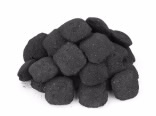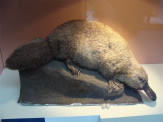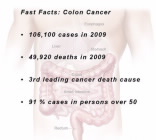FOR IMMEDIATE RELEASE
ACS News Service Weekly PressPac: January 13, 2010
ACS News Service Weekly PressPac: January 13, 2010
Contact
- Science Inquiries: Michael Woods, Editor, 202-872-6293
- General Inquiries: Michael Bernstein, 202-872-6042
![]()
Scientists are reporting that “biochar” — a material that the Amazonian Indians used to enhance soil fertility centuries ago — has potential in the modern world to help slow global climate change. Mass production of biochar could capture and sock away carbon that otherwise would wind up in the atmosphere as carbon dioxide, the main greenhouse gas. Their report appears in ACS’ Environmental...
![]()

Abandon any notion that the duck-billed platypus is a soft and cuddly creature ― maybe like Perry the Platypus in the Phineas and Ferb cartoon. This platypus, renowned as one of the few mammals that lay eggs, also is one of only a few venomous mammals. The males can deliver a mega-sting that causes immediate, excruciating pain, like hundreds of hornet stings, leaving victims incapacitated...

Scientists have developed an alternative method for producing the active ingredient in Tamiflu®, the mainstay for fighting H1N1 and other forms of influenza. The new process could expand availability of the drug by reducing its cost, which now retails for as about $8 per dose. Their study is in ACS’ Organic Letters, a bi-weekly journal. Anqi Chen, Christina Chai and colleagues note...
![]()

Scientists in China are reporting discovery of two proteins present in the blood, of people with colon cancer that may serve as the potential biomarkers for accurately predicting whether the disease will spread. Their study is in ACS’ Journal of Proteome Research, a monthly publication. Maode Lai and colleagues note that in 2008, 150,000 new cases of colon cancer and over 50,000 deaths...
![]()
Contrary to popular belief, China is doing much more than exporting clothing, toys, electronics, and other popular consumer goods. The country is on a scientific roll, to the point where it could conceivably be regarded as the emerging global center for scientific research, a new report indicates. It describes an amazing growth in chemical patenting and publishing that could bring new and innovative products to the world market ranging from pharmaceuticals to microchips, according to an article in the current issue…
![]()

- Media Registration ACS 239th National Meeting, March 21-25, 2010, San Francisco
News media accreditation and housing reservations are now open for the 239th National Meeting & Exhibition of the American Chemical Society (ACS), the world’s largest scientific society. It will be held March 21-25 in San Francisco. Reporters and editors can apply for complimentary registration now at meeting registration. Hotel reservations and other information are available at housing. - Press releases, briefings, and more from ACS’ 238th National Meeting
www.eurekalert.org/acsmeet.php
http://www.ustream.tv/channel/acslive - Must-reads from C&EN: World chemical outlook for 2010
What’s the economic out look like for the global chemical industry in 2010? This annual C&EN feature presents a sweeping panorama of a key industry that drives the economies of the United States and other countries. The 9-page article forecasts that U.S. chemical output will rise by 3 percent, for instance, after dismal times mired in the economic downturn. For a copy of the story, go to chemistry outlook. - ACS Pressroom Blog The ACS Office of Public Affairs’ (OPA) pressroom blog highlights research from ACS’ 38 peer-reviewed journals and National Meetings.
- Bytesize Science blog Educators and kids, put on your thinking caps: The American Chemical Society has a blog for Bytesize Science, a science podcast for kids of all ages.
- ACS satellite pressroom: Daily news blasts on Twitter
The satellite press room has become one of the most popular science news sites on Twitter. To get our news blasts and updates, create a free account at https://twitter.com/signup. Then visit http://twitter.com/ACSpressroom and click the ‘join’ button beneath the press room logo. - ACS Press Releases
Press releases on a variety of chemistry-related topics. - General Chemistry Glossary
- Chemical Abstracts Service (CAS) Web site on everyday chemicals
Whether you want to learn more about caffeine, benzoyl peroxide (acne treatment), sodium chloride (table salt), or some other familiar chemical, CAS Common Chemistry can help. The new Web site provides non-chemists and others with useful information about everyday chemicals by searching either a chemical name or a corresponding CAS Registry Number. The site includes about 7,800 chemicals of general interest as well as all 118 elements from the Periodic Table, providing alternative names, molecular structures, a Wikipedia link, and other information. - Science Connections from CAS
CAS - Science Connections is a series of articles that showcases the value of CAS databases in light of important general-interest science and technology news. Topics range from fruit flies to Nobel Prize winners, with the CAS - Science Connections series pointing to CAS databases for a more complete understanding of the latest news.
- Bytesize Science
Bytesize Science is a science podcast for kids of all ages that entertains and educates, with new high-definition video podcasts and some episodes in Spanish. Subscribe to Bytesize Science using iTunes. No iTunes? No problem. Listen to the latest episodes of Bytesize Science in your web browser. - Global Challenges/Chemistry Solutions
This special series of ACS podcasts focuses on some of the 21st Century’s most daunting challenges, and how chemists and other scientists are finding solutions. Subscribe at iTunes or listen and access other resources at the ACS web site www.acs.org/GlobalChallenges. - Science Elements
Science Elements is a podcast of PressPac contents that makes cutting-edge scientific discoveries from ACS journals available to a broader public audience. Subscribe to Science Elements using iTunes. Listen to the latest episodes of Science Elements in your web browser. - SciFinder® Podcasts
Interested in healthful plant phytochemicals, nanotechnology, or green chemistry? Check out the SciFinder series of podcasts, which explore a vast array of current interest topics and new discoveries in the 21st century. The SciFinder podcasts are available in English, Chinese, Japanese, and Portuguese.
Note to Journalists and Other Viewers
This is the latest American Chemical Society (ACS) Office of Public Affairs Weekly PressPac with news from ACS’ 38 peer-reviewed journals and Chemical & Engineering News.
This information is intended for your personal use in news gathering and reporting and should not be distributed to others. Anyone using advance ACS Office of Public Affairs Weekly PressPac information for stocks or securities dealing may be guilty of insider trading under the federal Securities Exchange Act of 1934.
Please cite the individual journal, or the American Chemical Society, as the source of this information.
The American Chemical Society is a nonprofit organization chartered by the U.S. Congress. With more than 161,000 members, ACS is the world’s largest scientific society and a global leader in providing access to chemistry-related research through its multiple databases, peer-reviewed journals and scientific conferences. Its main offices are in Washington, D.C., and Columbus, Ohio.

